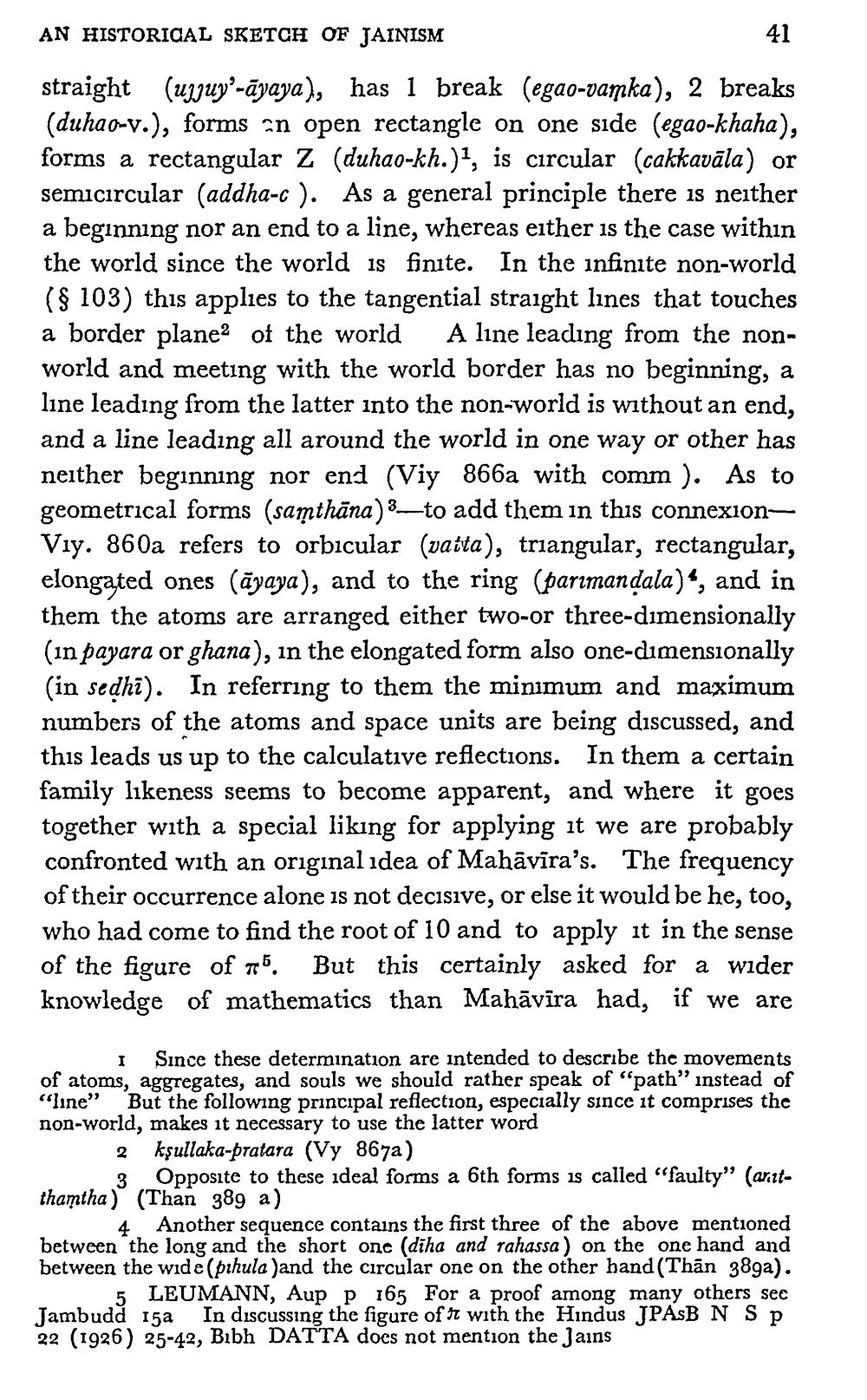________________
AN HISTORICAL SKETCH OF JAINISM straight (ujjuy'-āyaya), has 1 break (egao-vamka), 2 breaks (duhao-v.), forms an open rectangle on one side (egao-khaha), forms a rectangular Z (duhao-kh.), is circular (cakkavāla) or semicircular (addha-c ). As a general principle there is neither a beginning nor an end to a line, whereas either is the case within the world since the world is finite. In the infinite non-world ($ 103) this applies to the tangential straight lines that touches a border plane of the world A line leading from the nonworld and meeting with the world border has no beginning, a line leading from the latter into the non-world is without an end, and a line leading all around the world in one way or other has neither beginning nor end (Viy 866a with comm ). As to geometrical forms (samthāna) to add them in this connexionViy. 860a refers to orbicular (vatta), triangular, rectangular, elongated ones (āyaya), and to the ring (parimandala)", and in them the atoms are arranged either two-or three-dimensionally (in payara or ghana), in the elongated form also one-dimensionally (in sedhi). In referring to them the minimum and maximum numbers of the atoms and space units are being discussed, and this leads us up to the calculative reflections. In them a certain family likeness seems to become apparent, and where it goes together with a special liking for applying it we are probably confronted with an original idea of Mahāvīra's. The frequency of their occurrence alone is not decisive, or else it would be he, too, who had come to find the root of 10 and to apply it in the sense of the figure of 76. But this certainly asked for a wider knowledge of mathematics than Mahāvīra had, if we are
I Since these determination are intended to describe the movements of atoms, aggregates, and souls we should rather speak of "path" instead of “line" But the following principal reflection, especially since it comprises the non-world, makes it necessary to use the latter word
2 kşullaka-pratara (Vy 867a)
3 Opposite to these ideal forms a 6th forms is called "faulty” (ariite thamtha) (Than 389 a)
4. Another sequence contains the first three of the above mentioned between the long and the short one (diha and rahassa) on the one hand and between the wide (pihula )and the circular one on the other hand (Thân 38ga).
5 LEUMANN, Aup p165 For a proof among many others sec Jambudd 15a In discussing the figure of r with the Hindus JPASB N Sp 22 (1926) 25-42, Bibh DATTA does not mention the Jains




